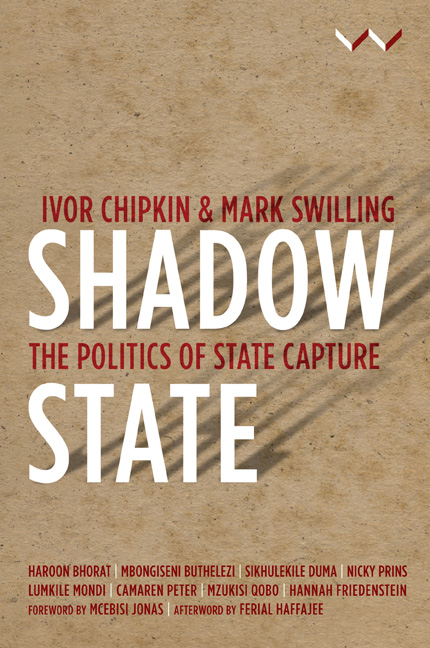Book contents
- Frontmatter
- Contents
- List of figures and tables
- Acronyms and abbreviations
- Key terms
- Acknowledgements
- Foreword
- Prologue
- Introduction
- Chapter 1 Structuring the Capture of the State
- Chapter 2 The Politics of Betrayal
- Chapter 3 Power, Authority and Audacity: How the Shadow State Was Built
- Chapter 4 Repurposing Governance
- Chapter 5 Conclusion
- Afterword
- Contributors
- Index
Chapter 2 - The Politics of Betrayal
Published online by Cambridge University Press: 17 May 2019
- Frontmatter
- Contents
- List of figures and tables
- Acronyms and abbreviations
- Key terms
- Acknowledgements
- Foreword
- Prologue
- Introduction
- Chapter 1 Structuring the Capture of the State
- Chapter 2 The Politics of Betrayal
- Chapter 3 Power, Authority and Audacity: How the Shadow State Was Built
- Chapter 4 Repurposing Governance
- Chapter 5 Conclusion
- Afterword
- Contributors
- Index
Summary
The dawn of democracy in South Africa in 1994 delivered a promise that united the country. Nelson Mandela, at his inauguration on 10 May 1994, expressed this promise in the clearest terms. Speaking on behalf of the democratically elected ANC-led government, he vowed
to liberate all our people from the continuing bondage of poverty, deprivation, suffering, gender and other discrimination … [to] build [a] society in which all South Africans, both black and white, will be able to walk tall, without any fear in their hearts, assured of their inalienable right to human dignity – a rainbow nation at peace with itself and the world.
To deliver on this founding promise the ANC needed to use the state institutions it had inherited from the apartheid era. These institutions included national, provincial and local government administrations, SOEs, the judiciary, Parliament and the executive.
Unsurprisingly, transforming the core administrations and SOEs into vehicles for service delivery and development became a major challenge. Undertaking deep institutional reform in order to overcome the complex legacy of apartheid proved to be a daunting exercise that required extraordinary levels of dedication, technical capacity and a well-defined governance programme.
Although significant progress was made, there is now widespread dissatisfaction across society and within the ANC itself with the performance of these institutions. Whereas the promise of 1994 was to build a state that would serve the public good, the evidence suggests that state institutions are being repurposed to serve the private accumulation interests of a small, powerful elite. The deepening of the corrosive culture of corruption within the state and the efforts to graft a shadow state onto the existing constitutional state have brought the transformation programme to a halt.
It is clear that while the ideological focus of the ANC is ‘radical economic transformation’, in practice Jacob Zuma's presidency has been aimed at repurposing state institutions to consolidate a Zuma-centred power elite. Whereas the former appears to be a legitimate long-term vision to transform South Africa's economy in order to eradicate poverty and reduce inequality and unemployment, the latter – popularly referred to as state capture – threatens the viability of the state institutions that need to deliver on this long-term vision.
- Type
- Chapter
- Information
- Shadow StateThe Politics of State Capture, pp. 29 - 58Publisher: Wits University PressPrint publication year: 2018

